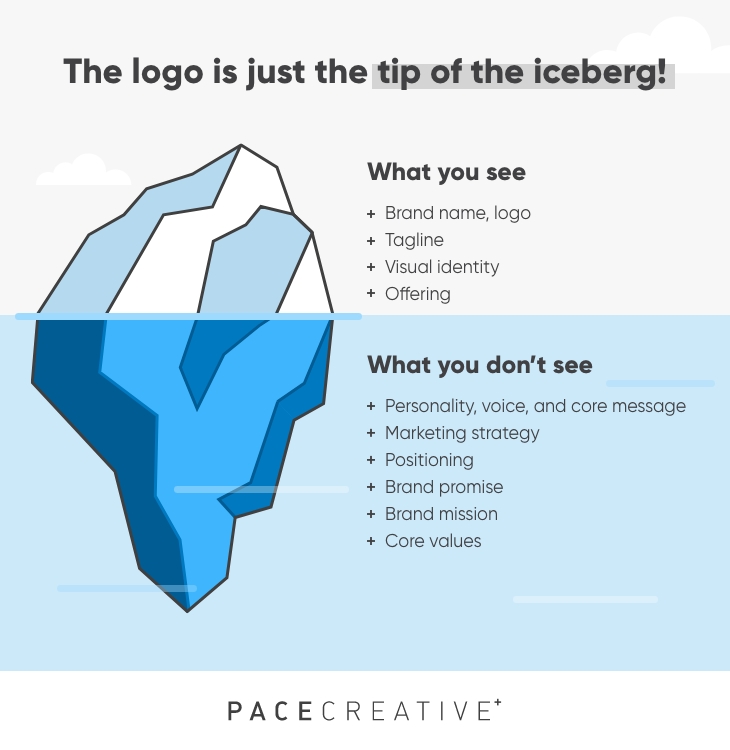In 2021, 43% of B2B companies identified a branding refresh as a marketing priority.
Does your business need a full brand refresh or just a B2B brand strategy adjustment?
For executives running B2B companies, one of the biggest challenges is figuring out how a branding strategy is performing so that you can get the most out of it!
The latest report from the CMI shows that top goal for content marketers remains brand awareness. In fact, the top two reasons to build brand awareness are to build trust, and to educate audiences. These are the exact goals we set for our clients when working on a branding strategy!
Firstly, we need to define what a B2B brand strategy entails:
What is a B2B Brand Strategy?
For any company, branding is more than just your logo, brand colour palette or brand style guide. For B2B brands especially, it’s crucial to build trust with your clients to build long-term relationships and increase awareness of your brand.
To put it simply, a B2B branding strategy is a long-term plan for your company. This plan outlines the identity, values, and market trajectory of your brand. It defines who you are, and what you can do. This is important for any B2B company; for others to know you, you first need to know yourself.

Marketing Iceberg: Psychology of the subconscious mind in Marketing by Farhad MK
Now that we’ve defined what a B2B brand strategy looks like, how do you know when you need to reassess and re-strategize?
What Metrics Should You Use to Assess a Branding Strategy’s Success?
In a post COVID-19 world, your online presence is more important than ever when it comes to connecting with potential clients. According to the CMI report, one of the best ways to measure your branding ROI is by analyzing the performance of your content. To get the best insight into how your online content is performing, you should be looking at four things (if applicable):
- Website engagement
- Conversions
- Website traffic
- Email engagement
Our favourite tools for this are Google Analytics, Moz, and Semrush. They can take some getting used to, but they’re really great for analyzing website engagement, traffic, and conversions. These tools can also display your performance over time, which is great for assessing the success of your branding strategy. Remember, the success of your branding strategy isn’t just based on a short-term increase in sales, but also in a more long-term strategy to build trust in your brand and increase your sales in the long-term. This is known as the “two-track” approach to branding!
How we Monitor the Performance of a Branding Strategy?
When it comes to online content, there is a wealth of information out there. There is tons of data and information about your brand and its performance. It can be daunting, however, to know where to look for it. The Content Marketing Institute has some great resources for this!
One of the easiest things to look at is your social media reach. If you use Facebook or LinkedIn, you can easily monitor your engagement and reach for each post. Both sites also offer the ability to analyze the page’s performance overall (Insights on Facebook and Analytics on LinkedIn) which is great tool for viewing your brands social media performance over time, as well as areas of improvement. Again, Google Analytics, Moz, and Semrush are great tools for monitoring the performance of your online presence.
If you want to learn more about tracking the success of your strategy, check out Part 1 and Part 2 of our “How to Measure the Success of your Content Marketing” Blog post series!
How Branding Strategy and Content Marketing Work Together?
As mentioned before, your branding strategy should encompass your brand’s identity, which extends to the way you present yourself across all channels of communication. For the best results, your brand should also have a content marketing strategy, as we described in 3 Reasons Companies Need a Content Marketing Strategy. To have an effective content marketing strategy, your branding should be cohesive and consistent. An effective B2B branding strategy will help guide all aspects of your marketing efforts.
Your logo and brand identity play a big role in content marketing, design-wise. All materials you put out should clearly be yours, and the Art Direction united across all marketing channels. This is the secret to building a solid branding strategy – it’s so important! Everything from social media posts, ads, and website content to brochures and PowerPoint presentations should work together to convey the positioning and help you stand out.
In addition to the visual communication, your tone-of-voice and brand values are equally as important. Having a strategically laid-out plan for your brand, with clearly written goals and ideals, will avoid any confusion across different channels. If you know your values and what message you want to put out there, you’ll be able to connect with clients without contradicting yourself and confusing potential customers. It’s much easier to create a strong content marketing strategy if you already have a clear idea of what you want and why.
When Should Your Company Invest in a Branding Strategy?
For any business, investing in a branding strategy is always a good idea. After all, your company’s branding reflects the identity of your brand itself and is one of the first impressions of you that a potential client will have.
There are, however, some instances when a refreshed branding strategy is even more helpful for your business.
- Change in vision
- Change in business direction (new productions, new services)
- Change in executive/ownership – new culture
- Refresh to remain relevant
Examples of B2B Branding Strategies We Implemented
Avamab Pharma
As a brand-new female-led gene therapy start-up, Avamab had no presence in the market. The CEO, Jill, reached out Pace Creative to create a brand strategy to help the new pharma stand out.
Pace Creative created a logo and marketing materials as part of a branding strategy that was modern, eye-catching, and represented their unique approach to gene tech.
Lola Systems
In the past, Lola Systems had invested on their communications efforts over the years with little results.
Lola’s CEO, Matt, hired Pace Creative to establish a brand identity to help the company stand out, and transform their website into a strategic tool that would help close deals faster! To build legacy, our team created an in-depth brand style guide to help maintain consistent brand messaging and identity across all communication channels.
The executive team is able to sign 2x more clients each month, and the company is able to close deals 50% faster.
Check out the newly launched and revamped website!
Pyure

Pyure (formerly Odorox) was unhappy with their existing branding, which they felt was hindering their visual communication and did little to build brand equity. In line with their desired brand values and personality, Pace Creative revamped their branding with a brand strategy, new name, logo, and a creative strategy for the company.
Conclusion
Are you auditing your B2B branding strategy or are looking to start a brand strategy for your B2B business? Reach out to us – let’s see if we can help!



